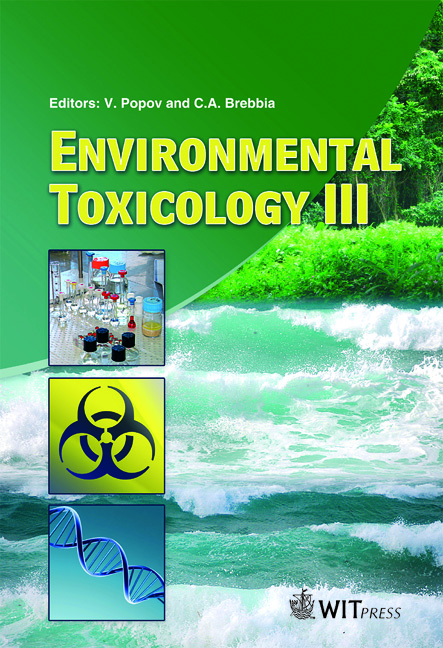High-throughput Analysis Of Multiple Stress Pathways Using GFP Reporters In C. Elegans
Price
Free (open access)
Transaction
Volume
132
Pages
11
Page Range
177 - 187
Published
2010
Size
600 kb
Paper DOI
10.2495/ETOX100171
Copyright
WIT Press
Author(s)
D. de Pomerai, C. Anbalagan, I. Lafayette, D. Rajagopalan, M. Loose, M. Haque & J. King
Abstract
Stress-responsive genes belonging to multiple defensive pathways in the nematode C. elegans are cross-regulated by kinase signalling (AKT-1/-2, p38 MAPK) and transcription factors (DAF-16, SKN-1). This cross-talk between stress pathways implies that they are best regarded as a stress-response network (SRN), whose behaviour as a whole should be amenable to mathematical modelling. We have used GFP reporter strains to provide a rapid readout of expression levels for 24 genes, representing principal outputs and transcription factors in the heat-shock, metal-binding, oxidative stress, phase I & phase II detoxification, and genotoxic stress pathways. Acute toxicity data (up to ~24 h) has been generated for selected metal (presented here) and pesticide toxicants across a wide range of doses, and common response patterns identified. Mathematical modelling of these response data, informed by an understanding of the underlying genetic circuitry, should allow our model to predict the likely toxicity of pollutant mixtures. Future work will test the accuracy of such predictions, leading to an iterative process of model refinement. Keywords: metal toxicity, caenorhabditis elegans, mathematical modelling, mixture toxicity, high-throughput GFP reporter assays, stress-response network. 1 Introduction Both chemical and physical (e.g. heat) stressors evoke defensive responses in living organisms – including DNA repair to counteract genotoxic DNA damage, heat-shock protein (hsp) expression to counter proteotoxic (e.g. thermal) damage to proteins, metal-binding proteins to sequester heavy metals, phase I and phase
Keywords
metal toxicity, caenorhabditis elegans, mathematical modelling,mixture toxicity, high-throughput GFP reporter assays, stress-response network





